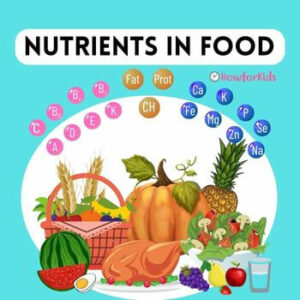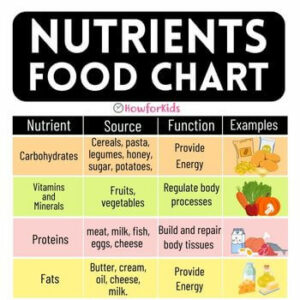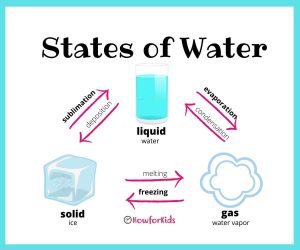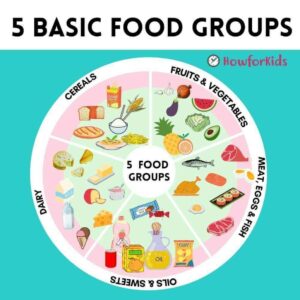How Foods are Classified by Function
Table of Contents
The foods are grouped according to different criteria. One of them is according to the functions that they develop in our body. Sometimes we feel disoriented and don’t know what to eat. How are foods classified according to their function? Types of Nutrients and their Functions

• Energy yielding food.
• Body building Food.
• Regulatory and protective Foods.
Knowing the functions of food helps us not only with homework! Recognizing the needs of the body guides you to select your diet in a convenient and healthy way. This way your body will be able to execute all the functions for which it is prepared.
“We are what we eat”. Food is the “fuel” for the body. Why? What does this mean?
Our body needs energy to carry out the activities we do daily such as walking, running, breathing, and maintaining body temperature. This energy is obtained from the nutrients that are contained in food. Through the process of oxidation or “combustion”, food releases energy that the body then transforms into heat and mechanical or movement energy.

What is Food? Definition for kids
Foods are natural substances (like an apple) or processed substances (like bread) that, when eaten, give your body the material and energy it needs to develop and grow.
What are Nutrients: Nutrient Classifications
Nutrients are chemical compounds that are contained in food.

Types of nutrients and their functions
They are:
• Carbohydrates
• Proteins.
• Fats
• Vitamins.
• Minerals.
• Water.
Energetic Function
It is fulfilled by carbohydrates and fats. Only in cases in which the caloric intake is insufficient will the body use the energy of proteins.
Energetic Foods
Energetic foods are those that contain carbohydrates and fats as main nutrients.
What are Carbohydrates?
Carbohydrates are made up of three elements: Carbon, Hydrogen and Oxygen.
According to their structure they are classified into:
• Monosaccharides: They are made up of a single carbon chain.
• Disaccharides: Consisting of 2 monosaccharides.
• Oligosaccharides: Between 3 and 9 monosaccharides.
• Polysaccharides: By chains of 10 or more monosaccharides that may or may not be branched.
When carbohydrates are metabolized they release 4 calories (or kilocalories) per gram. Let’s speak properly, food does not “contain” calories, it contains potential energy. This means that when metabolized they release a certain amount of energy. For this reason, energy foods should be consumed in moderation and in amounts appropriate to the daily requirement of each person. When you consume more energy than your body “spends”, these additional calories accumulate and can lead to health problems (obesity). A baby does not require the same amount of daily energy as an athlete.
Fats or lipids are also energy foods. When metabolized in the body, they release 9 calories per gram.
Fun facts about Nutrients in food
Is Water an Energetic Food?
No. Some publications present this misconception and confusion. Energetic means that it provides more energy and calories. Therefore, when we see that they mention water as an energy food, it is incorrect. Water is essential for life and you have to drink it in abundance, but it is not an energy food because it does not release energy or provide calories.
Read also: Water Cycle for kids
Some foods DO NOT provide nutrients
Exactly, there are foods that do not provide nutrients. We consume them out of habit or for pleasure. Some condiments are an example.
Healthy Energy and Empty Calories. Among the energetic foods are those that only give you “empty calories”. This is an expression applied by nutritionists to define an amount of energy without any or very few nutrients. Foods that provide healthy energy are those that, together with their caloric content, deliver other essential nutrients for human life. Numerous studies affirm that the excessive consumption of foods that provide empty calories harms health. It favors weight gain and the development of diseases such as obesity, cardiovascular diseases, diabetes or cancer.
Read also: Five Basic Food Groups easy for kids and students
Energetic food: Examples
1. Vegetable oils and fats: They provide 100% fat, which constitutes a good amount of energy.
• Vegetable oils: Olive oil, avocado, seed oils (grape, sunflower, corn, soybean, safflower, others). They provide essential fatty acids (Omega-3 and Omega 6) and are the main vehicle of fat-soluble vitamins (A, D, E and K). Essential fatty acids cannot be synthesized by the body and therefore must be ingested through food.
• Animal fats: Butter, cream, cheese, milk, milk chocolate, meat derivatives such as sausages, bacon, cold cuts, others.
• Pastry products and cookies contain fats and carbohydrates and are very energetic. Although margarine is a lipid of hydrogenated vegetable origin, unlike vegetable oils, it contains fatty acids that are harmful to health. Hydrogenated oils from industrial processes have hydrogen atoms added (they are artificially saturated) in order to increase their consistency (solidify an oil). This is the case of margarines that are used to spread, make chocolates, sweet or salty cookies.
2. Cereals and derivatives: Wheat, rice, corn, barley, rye, oats), flour, bread, pasta, cookies. Foods made from flour are energy foods due to their high amount of carbohydrates.
3. Legumes: Peas, chickpeas, broad beans, lentils, beans, soybeans.
4. Sugar: Contains 100% carbohydrate and for every gram it provides 4 calories.
5. Honey: Contains 75% carbohydrates.
6. Sweets: They contain approximately 75% carbohydrates on average. The content varies depending on whether they are fruit candies, dulce de leche, compact quince or sweet potato candies.
7. Foods rich in simple sugars: Fruit juices, soft drinks, candy. They are energy foods that provide carbohydrates and should be consumed in moderation. Some only provide what are called empty calories and energy. It refers to the fact that they do not provide essential nutrients (vitamins and minerals).
8. Starchy vegetables: Potato, sweet potato, tubers and contain more carbohydrates than other vegetables.
9. Pastry mixes in general: Cakes, cakes, bills, pastries, combine the energy that comes from flour, sugar and butter.
10. Dried fruits: They fulfill energetic and regulatory functions. Walnuts, almonds, hazelnuts, pistachios are an important source of healthy energy, due to the vegetable oils they provide.
11. Various meats: Although to a lesser extent, the proteins and fats in meat can be used as a source of energy. Proteins provide the same number of calories per gram as carbohydrates. However, as the body uses proteins for its construction function, it only uses them as energy food when it does not have carbohydrates or fats at its disposal.
List of Energetic Foods
• Olive oil, grape, sunflower corn, soy.
• Rice
• Oatmeal
• Banana, grape, fig
• Sweet potato, potato
• Chickpeas, beans, lentils, peas
• Walnuts, almonds, hazelnuts (nuts)
• Noodles and pasta (gnocchi, ravioli)
• Avocado
2. Body Building Food.
Plastic foods are protein foods also called building foods. How are foods classified according to their function?
Food Builders of what? What do they repair?
Our body constantly needs substances to generate new tissues and cells. This process is called cell replacement. Proteins along with water and minerals fulfill this function. They are found in protein foods.
During the growth period, our body increases in size and size progressively. You can see how a baby grows and develops into a child, a teenager, and then an adult. This is only achieved by supplying the essential nutrients for the cells to multiply, giving rise to growth.
Also throughout life cells regenerate, new cells are born, others die. Skin cells, red blood cells, tissues damaged by a wound need elements to repair, replenish and grow.
Plastic Foods are Protein Foods that promote tissue growth and renewal. They provide protein, calcium and iron.
Builder or Protein Foods Examples
• Animal origin: Dairy products and derivatives, eggs, meat, fish (red, poultry, cold cuts).
• Plant-based: legumes, cereals (gluten: glutenins, prolamins) and dried fruits.
Milk and its derivatives provide calcium, vitamins and proteins for the care of bones and teeth.
Meats, eggs, poultry, fish and derivatives provide high-quality complete proteins. The fat content will depend on the meat, on the type of cut. There are lean cuts for example the loin, peceto, rump. They are the source of vitamin B12.
Fish provides essential fatty acids (AGE) that are polyunsaturated lipids. They are called essential because our body cannot “manufacture” them by itself. It is essential to ingest them with the diet.
Legumes and dried fruits complement each other properly and provide all the essential amino acids. Dried fruits are a source of minerals and essential fatty acids.

NUTRIENTS
Nutrients are those substances that are normal components of our body and food, whose absence or decrease below a limit minimum produce after a while, a deficiency disease.
Macronutrients are known as carbohydrates, fats and proteins.
Micronutrients are divided into Vitamins and Minerals. We need them in small amounts but they are no less important for that.
3. Regulatory Foods: Fruits and Vegetables
Regulatory foods definition: The so-called regulatory foods are those that contain vitamins and minerals. These nutrients will facilitate and control the various physiological functions so that all the vital processes that take place in our body flow normally.
Regulatory Nutrients

- Vitamins: They are needed in small amounts for growth, maintenance of life and reproduction. They are essential for life. The body itself cannot synthesize them, so we have to ensure their contribution through food.
- Minerals: These are elements that the body requires in low proportions to ensure growth, conservation and reproduction. Like vitamins, they do not provide energy. Some minerals are needed in greater proportion than others (calcium, phosphorus, sodium, chlorine, magnesium, iron and sulfur).
Although microminerals or trace elements are essential, they are needed in smaller amounts (zinc, copper, iodine, chromium, selenium, cobalt, molybdenum, manganese and fluorine, among others).
Both vitamins, minerals and fibers are found in fruits and vegetables.

